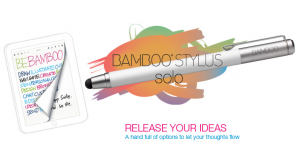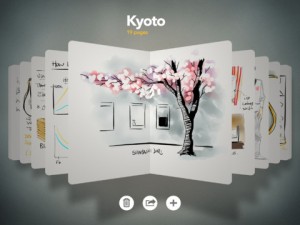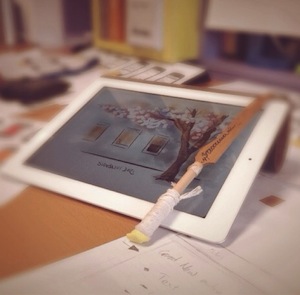Taking the digital notebook a step further.
In the traditional sense a notebook is a physical object. It has an owner and that owner uses it to capture ideas, thoughts and information. Notebooks are used in a context which are unique to the owner and its contents are personal, and the significance and connections often meaningless to others. With the rise in popularity of mobile and tablet technology and the affordances they offer there are opportunities to rethink notebooks in digital form, but what real benefit does a digital notebook have compared to a traditional paper based notebook?
The notebook and sketchbook applications available on the market allow you to capture ideas, thoughts and information in a digital format. Digital has its obvious benefits, such as the ease of re-organising the data, sorting, tagging, linking to online content, editing and exporting capabilities. Some applications even allow you import or capture images, much like a scrapbook.
Some might say that these are obvious features and equally trivial computing challenges, that digital notebook applications do nothing more than translate the user experience from a physical to a digital one, which has limitations of its own, namely battery consumption . How often does your phone or tablet die on you, seriously?
A current challenge for the digital notebook is precession, accuracy and dexterity when drawing and writing. Have you ever tried to write or draw with your index finger on a tablet? It’s no easy task. Many people do use a stylus, but whether this actually improves dexterity and even creativity, requires further study. Never-the-less I bought a Wacom Bamboo Stylus (pictured above), the most expensive consumer wireless stylus. Why? Because it claimed to offer a solution to problems I was experiencing when drawing and seemed to be the best in the market, so was it? Maybe it was. Was it any more precise than my index finger? No. Was it anything like writing on real paper with my favourite pen? No. Were my expectations too high? Perhaps. I returned it to Amazon within a day.
Many notebook and sketchbook applications aim to mimic traditional notebook aesthetics. Some do achieve that and others don’t. Paper (pictured above) is one of the latest sketchbook apps currently lauded for its aesthetics, interactions and variety of drawing tools such as pencil and water colour brushes. To get a real feel for its potential I wanted to try this app with a stylus, so I designed and crafted my own using a bamboo letter opener (a gift from my Malaysian friend), a piece of sponge from the VRC (Visual Research Centre) kitchen and some string (the final result is pictured below). Much like an old fashioned quill pen it needs dunked in water every now and again to allow the touch screen technology and conductivity from your skin to pass down through the string and to the sponge tip. Having played around and tested it, I do feel it adds value to the overall experience of using the Paper app. There is something special about the pen one writes with, whether it was a gift from a friend, or it produces a pleasing writing and drawing style or it’s just well balanced and comfortable to hold. What is interesting, and difficult to know, is why I’ve come to like drawing with a stylus now. Is it simply because my hand crafted stylus means more to me? Or is it the mind set that the Paper app put me in with its delightful visual aesthetics and interactions.
This relates to one of the challenges faced by the design team. Can the SerenA user interface put its user in a particular mind set which induces certain feelings that are beneficial for serendipitous discovery?
The development of a SerenA notebook stands out as being unique because it combines traditional note taking with novel computing techniques to make meaningful and serendipitous connections to people and information. SerenA does this by discreetly extracting RDF data from the information provided by the user, then uses semantic reasoning to find new and unexpected connections between people and ideas.
Jamie Shek
@jamieshek
Researcher
DJCAD, University of Dundee
- October 25, 2013ESRC Science Festival and SerenA(0) Comments
- April 9, 2013Serendipity. Let's talk numbers...(0) Comments
- April 3, 2013Second-hand serendipity?(1) Comments
- March 27, 2013The Princes of Serendip(0) Comments
- March 19, 2013Serendipity Salon Workshop at Future Everything. 21st March, 2013(0) Comments
- March 13, 2013March Events: Serendipity Symposium(0) Comments












Social Media